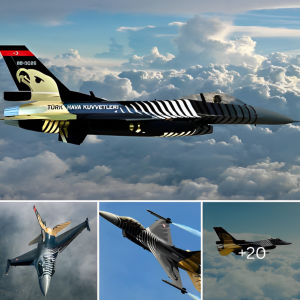December 2020 marks 50 years since the world’s first combat jet with fourth generation capabilities took its first flight, with the F-14 Tomcat taking off for the first time on the 21st of the month in 1970.
The fighter remains until today the second heaviest of its generation only to the Soviet MiG-31 Foxhound interceptor, and was one of just three major fourth generation designs to make use of variable swept wings – alongside the European Tornado and Russian Su-24M platforms.
The F-14 was one of five fourth generation aircraft in development in the United States at the time and was by far the largest and most expensive – with the power of its sensors and its long range air to air missiles unrivalled worldwide. Other aircraft of its generation developed in the U.S. included the F-15 heavyweight fighter, F-18 medium fighter and F-16 and F-20 light fighters.
Prominent features of fourth generation aircraft included use of fly by wire control systems, a renewed emphasis on manoeuvrability, digital flight control systems, new sensor technologies and more efficient engines for higher endurance.

U.S. Navy F-14 Fighters on Carrier Deck
The F-14A joined the U.S. Navy in 1974, and was followed by the induction of the F-15 and F-16 into the Air Force in 1976 and 78. The Soviet Union’s first fourth generation aircraft to enter service was the MiG-31, which became operational seven years after the F-14 in 1981 and was the world’s first fighter to use an electronically scanned array radar – which would later become a prominent feature of all aircraft of its generation.
This was followed by the Soviet MiG-29 and Su-27 which entered service in 1982 and 85 respectively – the enhanced derivatives of which still make up the backbone of the Russian Air Force today. The line between generations notably began to be blurred in the 1970s as third generation aircraft began to be enhanced with fourth generation technologies to provide many similar capabilities – with examples including the Chinese J-8 II, the Soviet MiG-25PD, the Taiwanese F-5E/F Tiger 2000/2001 and the German-American F-4F.

Chinese J-20 Fifth Generation Heavyweight Fighters
Despite 50 years having passed, the vast majority of fighters in production are still from the fourth generation – many being derived from airframes which first flew in the 1970s.
As of the beginning of December 2020 only three fifth generation fighter designs were in service across the world – including the American F-22 and F-35 and the Chinese J-20. These designs had entered service in 2005, 2014 and 2017 respectively, meaning that the world’s first fifth generation fighter had joined the U.S. military over thirty years after the first aircraft from the fourth generation had.
The scarcity of fighters with fifth generation capabilities can be largely explained by their complexity and sophistication, meaning that for all but the world’s two largest economies and defence sectors development would take a greater deal of time – if attempted at all. For the F-22 and F-35 in particular,, their high complexity has led to ongoing performance issues meaning the latter, although technically in service, is still years away from being ready for high intensity combat.
The collapse of the Soviet Union was another major factor, with the USSR having at least two fifth generation fighters in relatively advanced stages of development by the early 1990s which both had to be terminated. While successful fifth generation fighter programs are still few and far between, the United States, China and Russia have invested heavily in sixth generation programs which are likely to begin to enter service by the end of the decade.
The growing complexity of modern fighter designs has meant that smaller players attempting to field high end aircraft have increasingly struggled, with their defence sectors much more limited compared to those of the three leading countries in the field.






